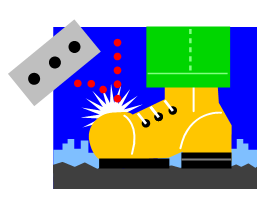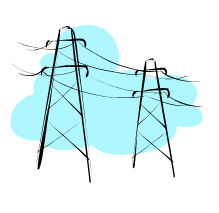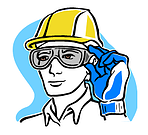 Safely operating equipment in the construction industry is critical. Accidents and injuries cause lost job time, increase insurance costs and can bring fines from OSHA. While all safety areas are important, several issues present the majority of problems. Understanding the major construction safety pitfalls and knowing how to avoid them will help keep your crew safe.
Safely operating equipment in the construction industry is critical. Accidents and injuries cause lost job time, increase insurance costs and can bring fines from OSHA. While all safety areas are important, several issues present the majority of problems. Understanding the major construction safety pitfalls and knowing how to avoid them will help keep your crew safe.
Entering and exiting machinery
Falls in construction are a leadingof injuries. These construction accidents do not always occur from ladders. Operators must use caution when they enter and exit the machinery they are operating. Muddy, slippery steps and hand holds provide no support. Workers need to climb into equipment safely, without falling. Operators must also exit their machines with caution, jumping can lead to injury.
- Workers should keep their gloves and boots as mud free as possible
- Hand holds and footholds should be checked daily to ensure they are secure
- Grab rails need to be located appropriately for all operators
 Loading and unloading
Loading and unloading
When materials are being loaded or unloaded, the machinery or trailer should be on level ground. Caution is still required as improper material loading can cause a tip over; weights need to be balanced. Observers and unnecessary personnel should not be in the area. If machinery is used to load a trailer, the operator must be kept aware of any workers stabilizing the load. All individuals should also pay attention to their location relative to the loading equipment. Finally, remember that uneven loads can cause equipment to tip when in motion.
 Too many workers in the wrong place
Too many workers in the wrong place
Equipment operators should have a spotter to guide them. This means one, and only one, individual assigned to the job. Observers should not be in the area where backhoes, dozers or other heavy equipment is being operated. The operator probably cannot see them and the spotter has enough to worry about. In order to avoid these construction accidents, all personnel on a site must be instructed to keep their distance.
 Above ground and underground obstructions
Above ground and underground obstructions
Operators of cranes, backhoes and lifts need to be aware of overhead obstacles and below ground utilities. Low electrical lines should be marked to prevent lift operators from running into them. Below ground utility areas should be marked with flags, tape or paint. Backhoe operators need to use caution when they are digging near utility areas. Hitting underground gas or electric lines can be fatal.
 Lock out - tag out
Lock out - tag out
Lock out - tag out systems are designed to protect workers while they are repairing equipment or performing maintenance. The use of these tags is critical for construction safety. All individuals must know how to use tag outs and fully understand that no one but the employee placing the lock out can remove it. The main goal of Lockout-Tagout procedures and systems to disable hazerdous power sources for equipment so maintenance can be performed by repair technicians safely. OSHA is particular is most concerned with the many thousands of non-fatal amputations caused each year by unsecured power for equipment and machinery during maintenance. Where equipment systems are being serviced by multiple subcontractors, locked-out devices are secured by folding scissors clamps with a lock for each subcontractor.
Safety training and compliance
No matter how well you know common safety issues, construction accidents will still occur if your employees are not properly trained. You also have to enforce the training and procedures to ensure that all safety equipment is used correctly. Short cuts and a resistance to the use of protective devices lead to accidents.
OSHA directly offers a full range of safety classes and these can be geared to your individual needs. Many private providers also offer affordable classes that provide OSHA training certificates upon completion. Classes can be taken online for added convenience.
OSHA's website includes free safety training materials that supervisors and workers can take advantage of. For example, an eight-minute video is available covering Crane Safety Awareness. Downloadable PDFs include Personal Protective Equipment. For example, proper use of hand signals for crane operators are another safety topic that should be covered. You can find much of the information online at no charge. Setting up a construction safety program does not require a large investment of time of money. However, the training is invaluable when it comes to keeping your construction crew safe.
Pacific Timesheet Construction solutions offers customizabe time, work and asset tracking, including equipment and materials tracking, and supervisor logs for safety checks, morning huddles and daily logs.
You can also learn more about our approach to time, work and asset tracking by downloading this free e-book:
Photo Credit: Wikipedia Commons: Folding Lockout Scissors Clamp
Sources:
Wikipedia: Lockout-Tagout, OSHA: Control of Hazardous Energy (Lockout/Tagout),
https://www.osha.gov/SLTC/controlhazardousenergy/standards.html
https://www.osha.gov/Publications/osha3151.html,https://www.osha.gov/video/cranesafety/index.html




